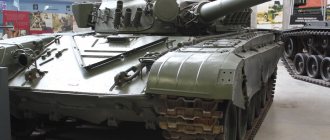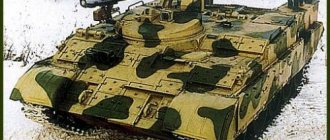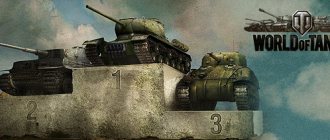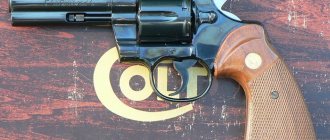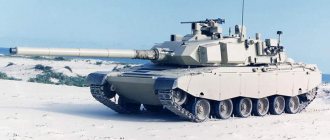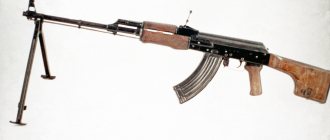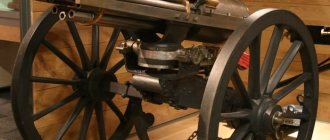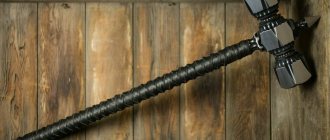Bow - weapon of gods and warriors
It was used by warriors of Assyria and Babylon, Egypt and Media, Greece and Rome, and the Indians of North and South America. In Homer's poem about the Trojan War and the wanderings of Odysseus, the bow is spoken of as a weapon of gods and warriors - a formidable and destructive weapon.
Horse archer of the Roman Empire (236-565)
Bows were made from horn, boiled tendons of large animals, and from hardwood trees. The firing range at which the target was effectively hit was about 200 meters. A trained archer, like, for example, the archer of the English army in the Hundred Years' War with France, fired up to two dozen arrows per minute, which were placed in a quiver - a special case made of leather, wood or metal. The quiver was decorated with intricate embroidery and patterns, often depicting the symbolism of belonging to a particular clan, and was attached to a saber or special belt.
Archers storm the French camp, reinforced with artillery. The liveries feature John Talbot's hunting dog emblem. Castillon was one of the biggest English defeats of the Hundred Years' War and marked the end of English rule in France.
Not a single battle in ancient times was complete without the use of a bow, which was used by both infantry and cavalry. So, for example, during the Peloponnian War of 431-404 BC, the Athenian army numbered 1,600 archers in its ranks. In medieval Byzantium, archers mounted on horses already constituted a mobile branch of the army, and a good half of the line infantry received, in addition to the sword and spear, this powerful weapon for those times. Archers, acting in front of the battle formations of their troops, started a battle, and sometimes even decided its outcome. During these times, the Ottoman Turks and other peoples of the Middle East and Central Asia assigned a particularly important role to the bow and arrow.
In Rus', as in other countries, the bow occupied a strong place in the armament system of troops. Archers, as a rule, located in front, in intervals and on the flanks of the battle formation of troops, inflicted significant damage on the enemy. By disrupting its formation, they contributed to the battle of heavy infantry and cavalry. While pursuing the retreating enemy, horsemen armed with bows overtook and destroyed him. The bow was used as a military weapon until the end of the 17th century.
Official
The Makarov pistol is a prominent representative of service weapons
According to the law, service “firearms” are available to those officials who, by the nature of their activities, are obliged to protect the life and health of people, important objects, engage in environmental protection, and engage in collection.
Basic list of requirements:
- should not fire in bursts;
- visually identifiable differences from samples of military small arms;
- the magazine can hold a maximum of 10 rounds;
- lead-filled bullets, hard metal cores are prohibited;
- compliance with state standards of the Russian Federation.
They are produced in smooth-bore and rifled versions, with long and short barrels. Muzzle energy – maximum 300J. Private security companies can arm themselves.
Crossbow and crossbow
In the Middle Ages, another type of throwing weapon appeared in Europe - the crossbow. Quite inferior to the bow in rate of fire, the crossbow was significantly superior to it in effective firing range, accuracy of hit and impact force of the arrow. Short and heavy (up to 500 g) crossbow arrows killed an unprotected warrior at a considerable distance, and at a shorter distance they pierced chain mail and even knightly armor.
Crossbow. XIV century
In Rus', the crossbow was called a crossbow and received recognition 100 years earlier than in European countries. The first mention of crossbows dates back to the 10th century, and by the 13th-14th centuries the crossbow firmly took its place among other types of weapons in the Russian army. It was used against the Swedish conquerors in 1240, the Teutonic knights in 1240-1242, and also during the invasion of the Tatar-Mongols. In 1382, repelling the onslaught of the Golden Horde troops led by Tokhtamysh, the residents of Moscow used a number of throwing weapons, including a crossbow.
The crossbow, also known as the crossbow, was essentially a mechanical bow. A bow was attached to a massive wooden stock, the string of which was pulled using a stirrup or a special crank device called a liver, and the launch was carried out by a simple mechanism located in the butt. Masterfully wielding his weapon, the crossbowman warrior posed a serious danger to the enemy.
In the course of technical development and improvement of types of weapons, the crossbow was gradually displaced from the battlefields by rapidly developing firearms.
Weapon. World weapons
In the modern 21st century, no one will be surprised by the concept of “ weapon ”. From his very birth, a person is faced with this far from peaceful concept. Already in early childhood, boys play a kind of “war games” with the help of a wide variety of toy weapons or use improvised objects for these purposes - be it sticks, stones, etc. Each of us remembers water pistols, bows, crossbows, slingshots, self-propelled guns... And then insults, bruises, abrasions, fractures... Yes, we say, there were times. There is something to remember. But already in adulthood, these almost harmless fun turns into real bloodshed, but with the help of a different type of weapon - firearms. And, great happiness, if the consequences of this “fun” are only the above-mentioned things. This only happens in films, and even then not always. Reality dictates a different outcome. It is extremely rare in life that weapons were used for good purposes - for self-defense or as an engine for the development of scientific and technological progress.
We can safely say that the word itself and, later, the term “weapon” arose almost simultaneously with the advent of consciousness in humans. Since that moment, a lot of water has passed under the bridge and evolution did not stand aside, but actively influenced its development: what is the cost of transforming primitive clubs and slings into ultra-modern firearms and weapons of mass destruction. If you take modern weapons, they have little in common with their predecessors. What is a weapon, what is meant by this word? So, let's look at everything in order.
Weapons are devices, objects, means used to destroy or suppress manpower, equipment, communications, and buildings of the opposing side (enemy). Today there are a huge variety of it: from cold steel to weapons of mass destruction. Every country in the world spends billions of cash equivalents to develop, manufacture or import weapons. Many world states have military budgets that are many times greater than the costs of medicine, social services, education, etc. combined. Sometimes these figures are tens of times higher than the total budgets of less developed countries. Just think what colossal funds these are!!! And this expenditure is not always done to protect one’s own state from attacks. In practice, there is expansion, dictatorship of political interests and, ultimately, enslavement. What can be observed today from the actions of the world gendarme (we will not specify who we are talking about). It has not brought anything good for the ordinary citizen and will never bring it.
And modern world weapons are aimed precisely at those same civilians, that is, you and me. But not everything is decided by weapons in this world. All power lies in truth, and weapons are only a way to achieve it.
The World-Weapons website or Weapons Catalog will help you learn about modern weapons, the history of weapons, and learn about the types of weapons and their characteristics. Enjoy your viewing and enjoy your knowledge! All accessible and useful information about military weapons for visitors to our portal!
| Pistols | Revolvers | Submachine guns | Slot machines |
| Smoothbore weapons and rifles | Sniper rifles | Machine guns | Grenade launchers |
| Combat aircraft | Combat helicopters | Warships | Tanks |
| Artillery | Torpedoes | Mines | Ammo |
| Grenades | |||
Firearms era
The official date of the emergence of firearms, at least among European peoples, is considered to be the 14th century, when the development of technology made it possible to use gunpowder.
In Germany, in the city of Freiburg, there is a monument to a man in a monastic robe, whose name was Berthold Schwartz. Franciscan monk Berthold Schwartz, accused of practicing black magic and witchcraft, was sent to prison. Continuing his experiments here, he once mixed sulfur, saltpeter and charcoal in a ratio of 10:75:15. The result was a composition of terrible destructive power: gunpowder! This happened in 1330. Soon this recipe became known everywhere, and it was from the beginning of the 14th century that gunpowder became widespread in Europe. Over the battlefields, where previously only the clash of swords, the whistle of a flying arrow and the sound of trumpets had been heard, the heavy hooting of the first cannons was heard.
Berthold Schwartz
Ancient mentions of gunpowder. Hannibal, Alexander the Great, sacred texts of India
Subsequently, gunpowder was used without significant changes until the second half of the 19th century. If you delve carefully into history, you can find amazing facts. It turns out that long before the discovery of Berthold Schwartz, gunpowder suddenly appears in one place, then in another, then just as suddenly suddenly disappears for as long as 500 years. It is inexplicable why such an important weapon of war does not become fully widespread, why not one of the conquering commanders was ever able to use this terrible means, which would bring any enemy to his knees. One might think that there were some people who sought to prevent the secret of this disastrous weapon from becoming the property of everyone. Information about gunpowder was kept in the strictest confidence. By whom? In any case, not by warriors or politicians, who would not fail to use it. And isn't it strange that every time a secret seems to have gotten out of control, cases of gunpowder being used become known, but then it disappears again without a trace?
In 1257, the Arabs used gunpowder during the siege of one of the cities of Spain. Another case of its use (also by the Arabs) dates back only to 690. In 668, gunpowder was known to the Egyptians, and even earlier, in 80 AD, its recipe from India came to China.
When Hannibal, commanding the Carthaginian army, passed through the Alps and descended into Italy, Roman legions blocked his path near Lake Trasimene. Here the fate of the entire campaign was decided. If Rome wins this time, it will finally become the ruler of the entire coast of the Dismal Sea, as the Mediterranean Sea was then called. The fate of the peoples will be controlled by fed-up Roman senators, greedy slave owners and cruel warriors. As for Carthage itself, it will be destroyed.
In history books you can read that Hannibal won, but there is hardly any description of how this happened. For some time the two armies stood opposite each other, then Hannibal retreated somewhat. Roman legionaries marched to the site from which the Carthaginians had retreated. Suddenly, under the feet of the Romans, as the chronicle of those years reports, an “earthquake” began. But it was a very strange earthquake, from which only the Romans suffered! Everything was covered in smoke. When the smoke cleared, it turned out that most of the legionnaires were lying on the ground, buried under a layer of stones and rocks, which, having flown into the air, fell on their heads. As you know, not a single earthquake could have caused stones and fragments of rocks to fly up and then fall on the heads of the Romans. It is also unlikely that an earthquake would be accompanied by smoke coming from nowhere. There can only be one explanation for what happened. Hannibal deliberately lured the Romans to a mined field and then detonated the bomb.
Among the oldest descriptions of the aggressive campaigns of Alexander the Great one can find extremely interesting facts about the use of gunpowder. Having set out to conquer India in the 4th century BC, the Macedonians encountered insurmountable obstacles. In a waterless area under the rays of the scorching sun, the soldiers of the great commander were exhausted. Lack of food and, as a consequence, hunger, disease and constant attacks by Hindus literally decimated the ranks of the conquerors. And to all this, as an attack, when defending fortresses, the Indians used devices that spewed “thunder and lightning,” against which even the strongest and bravest warriors were powerless. “The gods helped the inhabitants of this city! - they recalled later. “Lightning and thunder rained down on us from its walls.” This information is one of the earliest mentions of an explosive substance - gunpowder.
There is a mention of gunpowder in the Bible, but also not direct. It talks, for example, about the “Trumpet of Jericho.” This trumpet had such a loud sound that fortress walls fell from it. It can be assumed (and a number of researchers share this opinion) that we are talking about a siege weapon such as a cannon or mortar.
In India, gunpowder was known already five thousand years BC. Moreover, its recipe was known from even more ancient sacred texts.
Such gunpowder was called black or smoky because when it burned, a lot of black smoke was released.
Initially, only the explosive and incendiary properties of gunpowder were used. Quite a bit of time passed, and a person discovered its throwing properties.
Previously, gunpowder probably penetrated into Europe in two ways.
The first passed from China through Manchuria and Mongolia. Along this road it was brought to Europe by the conquering Mongols under the leadership of Batu. One of the written sources of the 13th century talks about the use of “fiery means of combat” by Mongol troops under the command of Batu’s brother, Khan Baydar, during the siege of Legnica Castle in 1241.
The second passed along the trade silk road, running through the territories of the countries of Indochina, Central Asia and the Middle East. Then, until the 14th century, gunpowder again, for some unknown reason, disappeared from Europe. The use of gunpowder energy to launch projectiles marked the beginning of a new era in military affairs: artillery appeared first, and soon after it, in the same century, a separate branch of artillery arose - handguns.
Bombard
Among the first examples of artillery firearms were bombards - guns that fired large-diameter stone cannonballs. Their size can be judged by the example of the “Kriemgild”, made around 1388 by the master Grunwald in the German city of Nuremberg. The mass of the gun was 3 thousand kilograms, and the mass of each core was more than 300 kilograms. To transport the Krimgild, a team of 12 horses was required.
Bombard "Krimgilda"
At the end of the 14th century, differentiation of firearms occurred. Artillery pieces and handguns are separated into separate groups.
In Rus', firearms also appeared in the 14th century. The exact date of its appearance has not been established. According to the Golitsyn Chronicle, “Armatians” appeared in Rus' in 1389 “and from that hour they learned to shoot from them.” But in the Novgorod Chronicle, and then in the Sophia Vremennik, mention is made not just of the appearance, but of the combat use of firearms - cannons and so-called mattresses during the defense of Moscow from the Tatars in 1382. In any case, the production of gunpowder and a fairly high level of ironworking and blacksmithing - necessary prerequisites for the emergence of firearms - existed in Rus' even before the 14th century.
Hand grip
One of the first examples of hand-held firearms was the hand grip. It appeared at the end of the 14th century and was widespread not only in Western and Eastern Europe, but also in Rus'. The first examples of hand grips were extremely imperfect and consisted of short iron, sometimes bronze tubes, riveted from separate strips or forged from a whole piece. One end of the tube was closed tightly and sometimes ended with a long metal rod or turned into a shaft at the back, which served as a modern stock. Tube-trunks without these rods were attached to stocks, which were roughly processed wooden blocks. During shooting, foot soldiers pushed him into the ground, and cavalrymen in the chest, shoulder, or took him under the arm. Loading and firing were carried out in the most primitive way. A charge of gunpowder was poured into the bore, and then a projectile was inserted into it - an iron or lead spherical bullet. The gunpowder charge was ignited manually by bringing a smoldering wick or a hot rod to a small hole in the barrel wall (seed hole).
Initially, the handbrake was operated by two arrows. The first shooter pointed the weapon at the enemy, and the second set fire to the gunpowder. The hand grip had an impressive size - a caliber of up to 25 mm and a weight of up to 8 kg. The target firing range did not exceed 150 meters. This weapon was used by the Russian army until the beginning of the 16th century. The ruchnitsa was not fundamentally different from artillery guns and, in essence, was the same guns, but only reduced so much that they could be fired from the hands. Hence the name “handle” (and later “gun”), adopted in Rus' and among a number of Slavic peoples. In the West, these early primitive handguns were called hand cannons, hand bombards, or petropellas.
Samples of European handguns of the 14th-15th centuries. A - iron hand bombard with a wooden stock from the late 14th century; B - all-iron hand bombard-hack of the early 15th century; B - petronella of the second half of the 15th century. When firing, the ring rested against the rider’s chest and the under-barrel protrusion rested against a fork-shaped stand attached to the pommel of the saddle; G - bronze hand bombard of the late 15th century
Already in the first quarter of the 15th century, the first improvements appeared in the design of hand-held firearms - the barrels became longer, the butts were curved, and the seed holes were located not on the aiming line, that is, not on the top, but on the side. Shelves were attached near the seed holes, onto which the seed was poured, and sighting devices appeared on the weapon. Such weapons in Western Europe were called culverins.
Culverins 15 in
At first, hand-held firearms of the fortress type predominated, that is, used for the defense of fortresses and rested against some strong support during shooting. In an effort to increase the range of an effective shot, gunsmiths began to lengthen the barrel. The weapon, already heavy, gained weight, and recoil increased significantly. To eliminate its noticeable effect, a massive hook (hook) was attached to the end of the barrel, which was hooked onto a stop - a wall or beam - and a shot was fired.
Gakovica
gakovitsa appeared - heavy hand-held firearms used in the 14th - 18th centuries. They fired tin bullets with a diameter of 14 to 25 mm. In Rus', such weapons were called zatinny, that is, serf squeaks. This weapon was unsuitable for field combat. The firing efficiency of the first types of handguns was extremely low, and handling them was very difficult and painstaking. The process of loading weapons was extremely time-consuming and usually took several minutes. The greatest inconvenience was the handling of gunpowder, which at that time was a fine, dusty powder (grainy gunpowder appeared only in 1525). Handling the first types of small arms was also unsafe, as they were prone to frequent explosions. A great inconvenience was the method of igniting the charge using a smoldering wick or a hot rod brought to the seed by hand. It distracted the shooter’s attention from aiming, contributing to a decrease in the already low accuracy.
Serf guns 15-16 centuries. Below is a Russian hakovnitsa from the early 16th century.
For a long time, handguns remained very imperfect - their improvement was hampered by the general low level of medieval technology.
Arquebus
arquebuses (Russian name for arquebuses appeared , direct predecessors of small arms of our days. They had curved stocks to rest on the shoulder and allowed shooting from the hand. True, the accuracy of the shot was still low, and the penetration power of the bullets was often insufficient to defeat the iron-clad horseman. The flight range of arquebus bullets did not exceed 250 meters. It should be noted that the arquebus was called not only a firearm, but also a throwing weapon, which was essentially a crossbow, but equipped with a semblance of a barrel with longitudinal cuts for a bow string, thanks to which it could shoot both arrows and lead bullets.
Arquebus early 16th century. with spring wick lock. Nearby are depicted the simplest serpentines of the second half of the 15th century, set in motion by the direct action of the shooter’s muscular force on them
The first primitive mechanisms appear on weapons, facilitating the process of firing a shot. Such a mechanism was a matchlock. At first it was an iron rod bent in the shape of the Latin letter S, and therefore resembled a snake; it received the name serpentine from the Latin serpeus - snake. A smoldering wick was clamped at the upper forked end, and the lower end was pressed by the shooter during descent. Rotating on an axis, the upper end of the trigger with a smoldering wick was pressed against the seed hole and ignited the gunpowder. Then the castle underwent a number of changes and improvements. At the end of the 15th century, a spring wick lock appeared, in which the trigger with the wick is brought closer to the primer using a pre-compressed spring. The cocked hammer was released when the button was pressed. Unlike the first version of the trigger, the spring matchlock almost instantly and with force hit the seed shelf, that is, aiming and firing were almost simultaneous. The trigger was returned to its original position by hand. Still, arquebuses had many disadvantages: the loading process was extremely lengthy and tedious for the arquebusier. The clumsy heavy weapon (up to 15 kg) exhausted the soldier so much that, according to contemporaries, an arquebusier who fired more than ten shots per hour was no longer able to hit the target.
Schemes of operation of spring wick locks: A - lock of the late 15th century. with a spring acting on the serpentine; B - castle 16th century. (a view from the inside is shown) with a lever mechanism in which the serpentine approaches the seed under the influence of the shooter’s muscular force, and returns it to its original position under the influence of a spring
In an effort to increase shooting, gunsmiths invented a rifled barrel in the same 15th century. Historians attribute this invention to the Viennese gunsmith Gaspar Zollner, who in 1498 made rifling in the bore parallel to its axis. After some time, August Kotter went further and replaced the straight thread with a screw thread. The accuracy and firing range of rifled arquebuses was much greater than smoothbore ones. Although, due to the general low level of technological development of those years, rifled weapons for military purposes received general recognition later, nevertheless, their quantitative growth in the armies of European states continued steadily. Already in 1455, the Swiss mercenary army had 100 arquebusiers for every 1000 infantry.
The first widespread use of arquebuses was noted in the Hussite Wars of 1419-1434, when the Czech Republic fought for its national independence. In these wars, the Taborite army, which united peasants and the urban lower classes in its ranks, under the leadership of Jan Zizka repelled five crusades of German knights. The main tactical unit of the Taborites was a cart with a crew of 18-20 people, two of whom were riflemen armed with arquebuses and hand grips. Thus, the saturation of the Taborite army with small firearms was impressive. Thus, in the Battle of Domažlica alone, the Taborites had 6,000 riflemen, which amounted to almost 10% of the total number of their troops.
At the end of the 15th and beginning of the 16th centuries, the role of firearms increased so much that these weapons began to significantly influence the course and outcome of battles. An example is the Battle of Agnadello in 1509. In an effort to protect its independence from the encroachments of the French crown, the Venetian Republic created a 25,000-strong army. A significant part of it had wick arquebuses. In May 1509, it took up a position on the rugged terrain of the left bank of the Adda River, between the cities of Trevilio and Rivalto, and awaited the enemy's approach. The larger army of Louis XII, trying to maneuver the Venetians into an open field, began to bypass their left flank. On the approaches to the village of Agnadello, the armies came into combat contact, in which the French vanguard encountered a barrage of lead bullets. The Venetian riflemen were formed in several ranks with open rows. Having fired, the arquebusier retreated at intervals to load his weapon, and his place was taken by the shooter of the second rank, followed by the shooter of the third, etc. In this way, relative continuity of fire was maintained. Therefore, repeated attempts by French infantry and men-at-arms to capture Venetian positions ended in complete fiasco. Hundreds and thousands of them fell under hails of arquebus bullets. Inspired by the picture unfolding before them, the Venetians made a fatal tactical mistake - they entered the plain, as a result of which they were defeated by superior enemy forces, who also received fresh reinforcements - several thousand soldiers.
Matchlock Musket
In 1521, the arquebus was replaced by the matchlock musket, whose homeland was Spain. The new gun had a larger caliber and length compared to the arquebus and, moreover, surpassed it in ballistic properties. The musket had a caliber of up to 23 mm, a length of 180 cm, its weight ranged from 8.2 kg to 10.24 kg, the firing range was 200-250 m. Shooting was carried out with round fifty-gram lead bullets, the impact of which even the heaviest and most durable could not withstand armor Therefore, this quality of the musket was decisive in the fight against heavy cavalry. The impressive weight of the weapon and the sensitive recoil when fired forced it to be used with a special fork-shaped bipod with a height of 120-135 cm, called a forket, and to put a soft leather pillow on the shoulder.
European muskets 16-17 centuries. with matchlocks, also used in Russia. Below is a fork that served as a support for the weapon during shooting.
Russian matchlock musket 17th century
Persian matchlock gun 16-17 centuries
Indian matchlock gun 16-17 centuries
Not every soldier could become a musketeer, so the strongest and strongest people were selected for this purpose. And the musketeer’s equipment was quite heavy. On his belt hung a leather bag, which contained up to three dozen lead bullets, which he cast with his own hands. A wide bandelier made of tanned leather was thrown over the left shoulder, where 12 measures were located on the cords, 11 with pre-measured charges of gunpowder and one with powder pulp to transfer fire to the powder charge on the barrel. Wicks up to one meter long hung here. The supply of gunpowder carried by a musketeer was placed in a large wooden powder flask, upholstered in thick leather.
Musketeer
Loading the musket was slow and was a real pain for the shooter. Even in the 17th century, during the Thirty Years' War, an Austrian musketeer had to listen to 163 commands and perform 99 operations to load and prepare the musket for firing before firing. Only after all this was a shot heard. At the time of loading, the musketeer was defenseless and was also armed with a sword for self-defense. It often happened that his life depended entirely on how he wielded this weapon. Being excellent fencers, musketeers were often more skilled with bladed weapons than with firearms. To protect the musketeers, pikemen were assigned, armed with pikes to repel enemy attacks. To maintain continuous rifle fire for musketeers, a special formation was invented - “caracole” (snail). It was a formation of ten ranks. After firing a volley at the enemy, the first rank was divided into two parts and quickly went to the rear to load muskets. The second, third and subsequent ranks advanced in its place. In addition, the musketeers were trained to make countermarches not only back, but even forward and to the flanks.
One of the first to appreciate the enormous capabilities of muskets was the Swedish army. In 1630-1631, in an infantry regiment of 1,440 personnel, 648 were armed with muskets. At the same time, regiments consisting entirely of musketeers appeared in the army of Gustavus Adolphus. The great military reformer, as some Western historians call him, Gustavus Adolphus developed and applied new linear tactics, which more than once brought success to the Swedes in the battles of the Thirty Years' War. Linear tactics allowed for the massive use of muskets. The weapon, located in 2-3 lines and 3-6 ranks deep, could simultaneously fire a salvo from several thousand barrels at once. The Swedish victories at Breitenfeld (1631) and Lützen (1632) convincingly proved the viability of the new tactics, where the increased power of the musket was more fully used.
